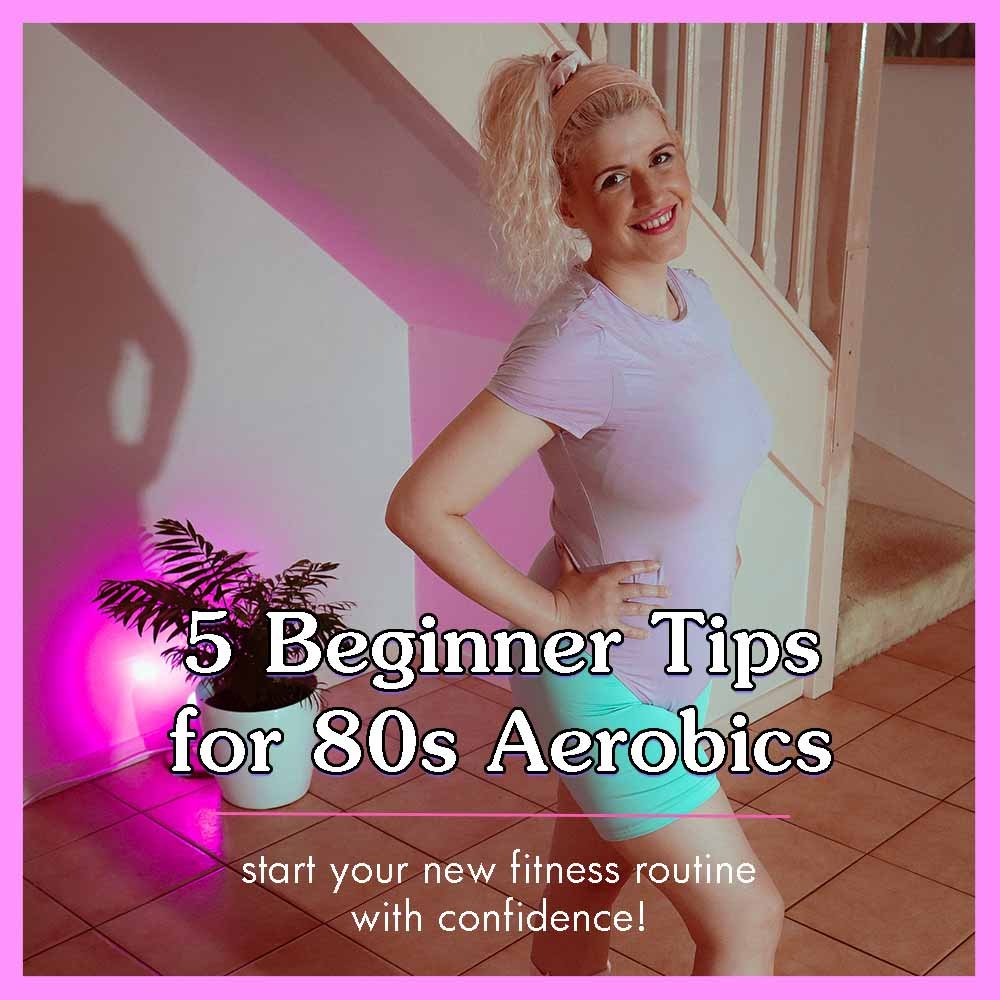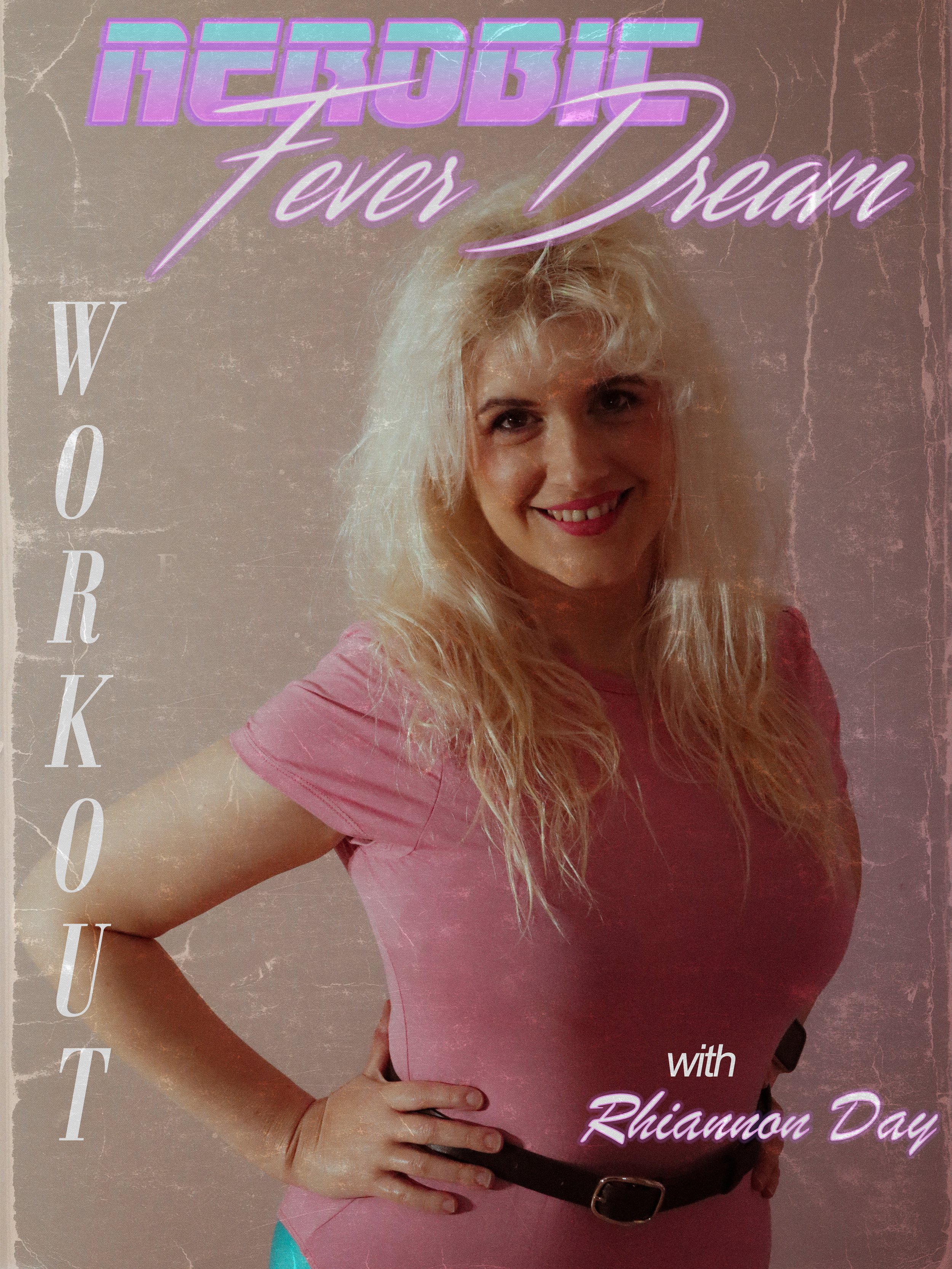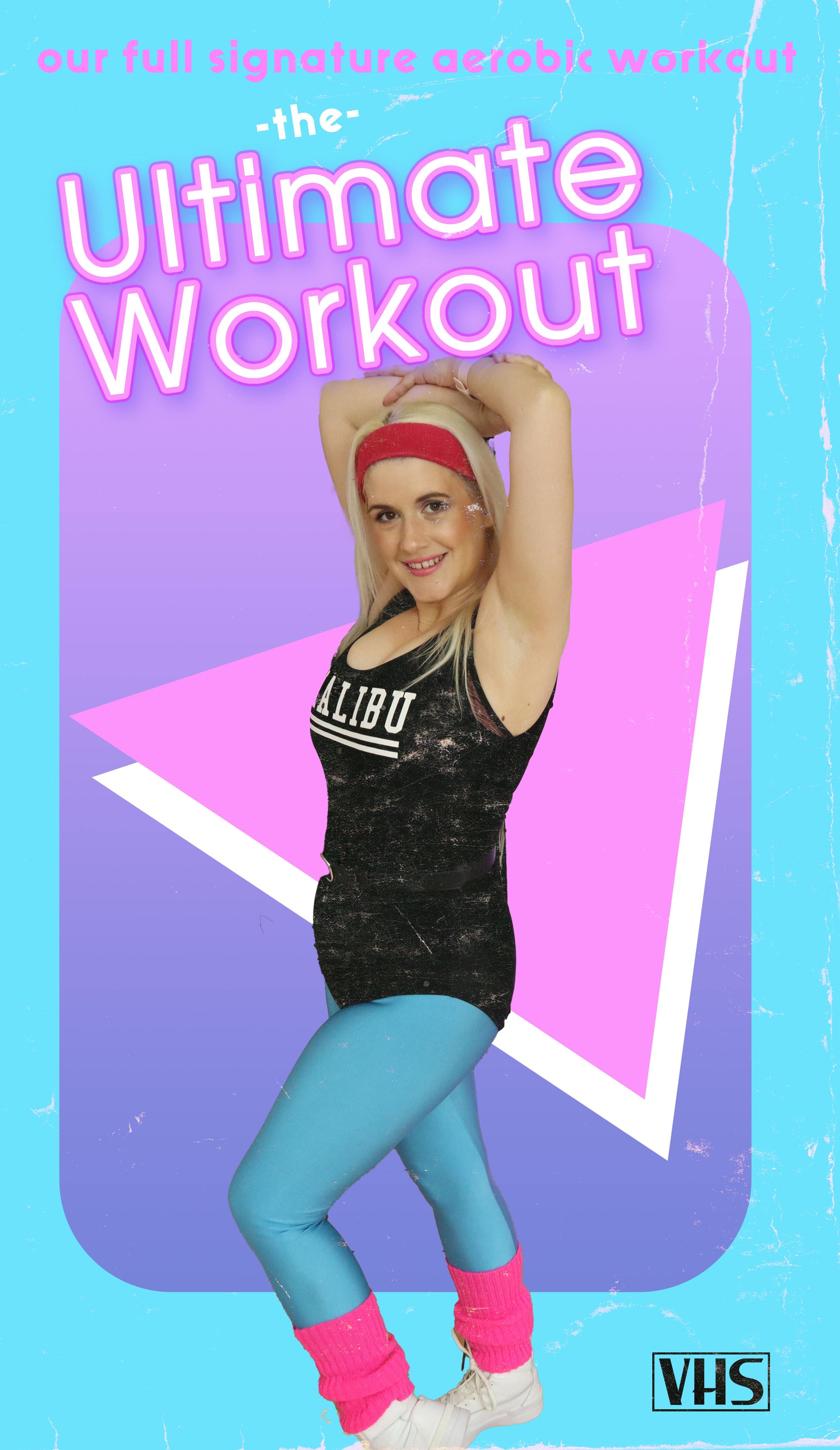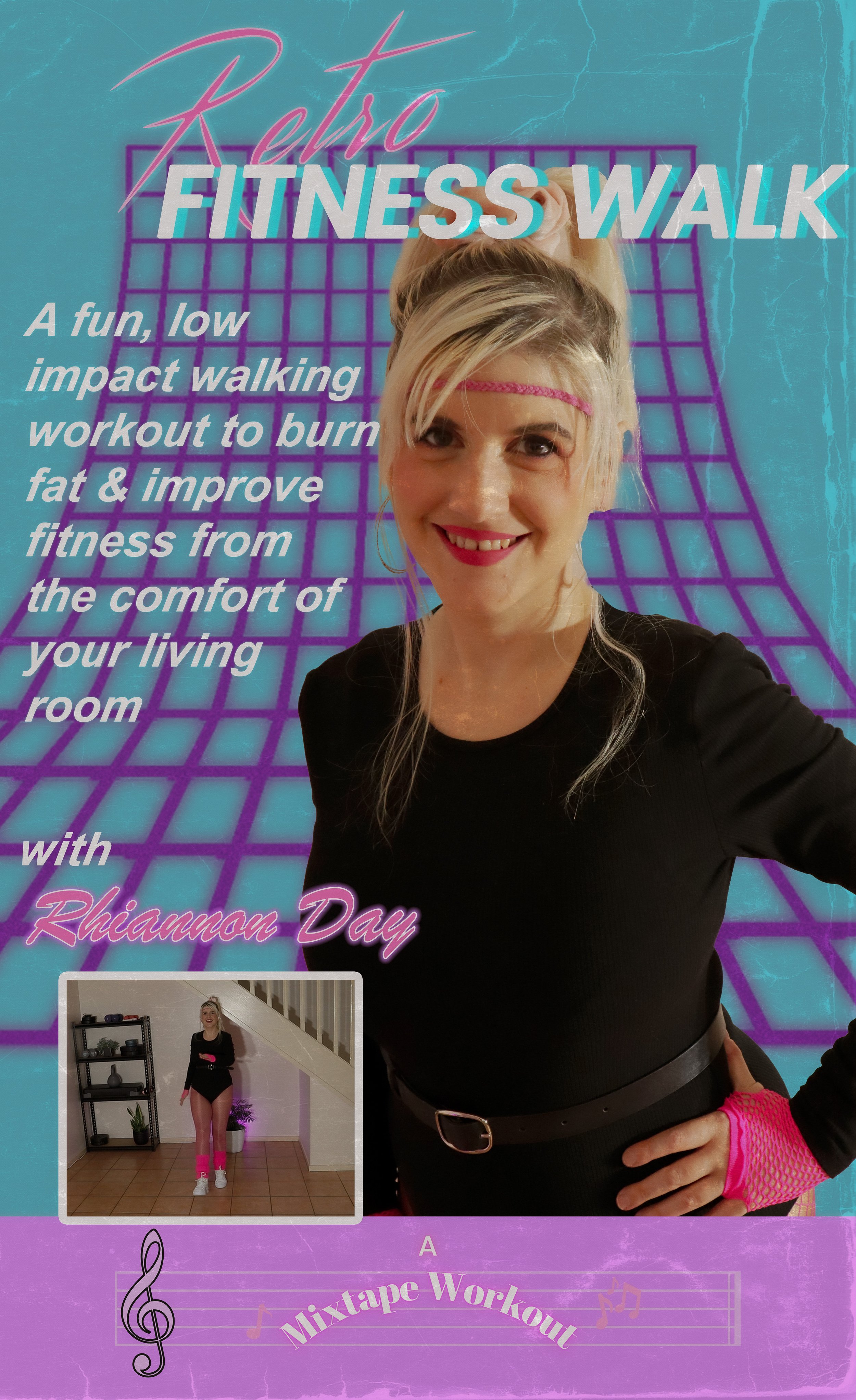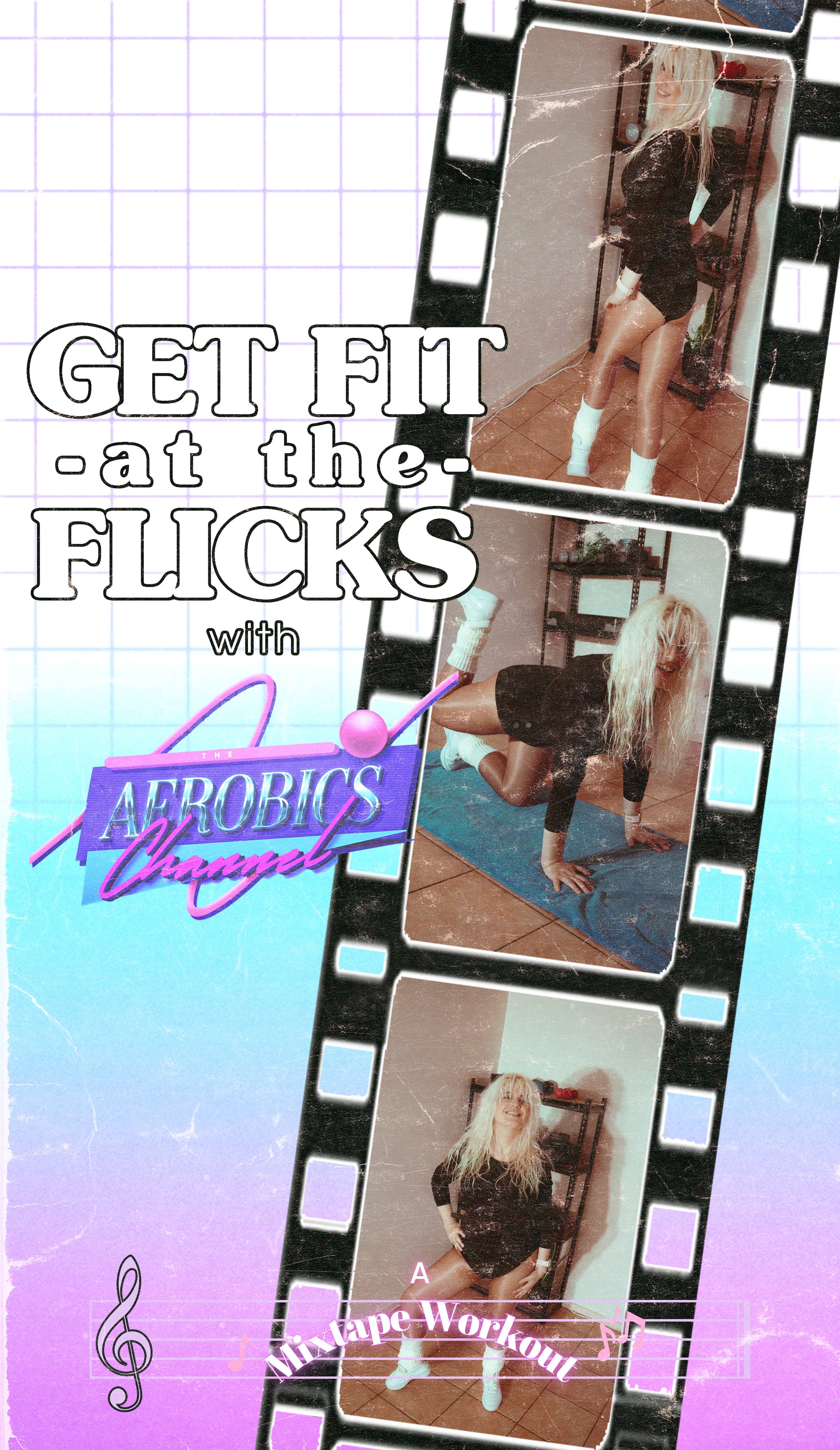5 Tips On How to Learn Aerobics as a Beginner
So you want to learn retro 80s style aerobics as a beginner to exercise? You're inspired by the aesthetics, the toned bodies, and iconic fashion of old-school aerobics … and it looks SO fun! It looks like the perfect way for a beginner to get fit and have fun doing it … there's just one problem. It can feel VERY daunting to learn aerobics - especially if you're a beginner. The complex moves and fast pace can make you feel left behind - or like you're dying after a few minutes.
So how are you supposed to learn aerobics as a beginner?
Just like with any fitness program, the most effective, safe, and sustainable way to learn aerobics as a beginner is to begin at your own place. Take your time with each movement, listen for beginner modifications and choose workouts of a shorter duration whilst you're just starting out with aerobics.
Affiliate Disclaimer: I am a participant in affiliate programs, including Amazon.com. This page may include affiliate links that will take you to an external website. Any purchase you make after clicking on one of these links will earn me a small commission at not a cent of extra cost to you. Concerned? Need to know more? No problems. Head to my Privacy Policy and Affiliate Disclosure for more information.
Tip #1 for Learning Aerobics as a Beginner: Start at your own pace
If you have joint issues, are overweight, have low cardiovascular fitness, or have any pre-existing conditions, first get the all-clear from your doctor. If the doctor agrees that an aerobics fitness program is right for you, start slow at your own pace.
Don't worry about "keeping up" with the instructor. Focus on doing YOUR best version of the exercises, not THE best.
After all, it’s YOUR workout. And the best part of working out in your living room is - there’s no one there to judge you. Except for maybe your cat.

Starting slow and gradually improving with each workout is a far better option than starting too fast too soon and hurting yourself or burning out.
Don't worry, I promise you will still get a good workout, even if you start slow.
Tip #2 for Learning Aerobics as a Beginner: Take your time with each movement
Some aerobics choreography takes a little coordination to get right. Grapevines, the pony, chasse, and similar moves are tricky for beginners. When you feel lost in the class, it can make you want to just give up on the whole thing.
I know, I’ve been there.
Now, your instructor in a live class will break down the most complex choreography either:
♥ before the class;
♥ before the song introducing the move; or
♥ both
and will also provide regular cueing throughout the class to guide you through it.
During the workout, do your best and stick to the beginner modifications (see below), and go at your own pace (see above). Then, come back to those moves later, practice them between workouts (as long as your body is warm), or rewind and go over those parts of the class you weren’t sure about.
Think of it like bonus workout time.
You can also watch some tutorials on YouTube to help you get those tricky parts down.
Breaking down the trickier movements into easier “chunks”, practicing them outside class time, and practicing them slowly will give you more time to get them right. This way you can come back to that workout video next time, perform those moves with confidence, and crush your next workout.
In our Home Video Store, we’ve got helpful in-depth guide videos for our most common movements that break down how to do each movement safely, and show you beginner friendly modifications, so you can feel confident and safe while you’re working out with us.
Tip #3 for Learning Aerobics as a Beginner: Listen out for Modifications
A good instructor will provide beginner "modifications” for most, if not all, of the movements in the class. Some workout DVDs will also feature a background dancer who is only doing the beginner variations. Others, like our workouts, will have little insert clips in the screen to show you the beginner variations. We feature ours on the bottom right corner of the screen so you always know where to find it in need.
When it comes to working out, don’t be a hero! It’s better to do a beginner modification with the right form than to jump straight into the advanced version if you don’t have the strength or cardiovascular endurance to do it safely.
Exercising with improper form means you won’t be targeting the right muscle groups. It also means that you’re probably not doing the movements safely, which could lead to injury.
Stick to the beginner modifications until they feel too easy - then you can play around with more advanced modifications.
Tip #4: Keep It Low Impact
Stick to low-impact versions of the movements in an aerobics class, especially if you’re new to exercise in general, recovering from an injury, illness or pregnancy, or overweight.
♥ What does "low impact exercise" mean? ♥
In exercise, impact levels refer to the amount of impact on your body and joints.Walking, cycling, and swimming are all examples of low-impact activity.
High impact, on the other hand, involves jumping and explosive movements.
It’s common in aerobic exercise because it’s a great way to get the heart rate up.
However it puts a LOT of strain on your body and isn’t safe for many pre-existing conditions.
High impact activity is awesome and fun, but it can be hard on your body if you're a beginner.
♥ ♥ ♥
Keep low to the ground and avoid bouncing.
For example, if the instructor asks you to jog, you could march instead. If the instructor asks you to chasse, do a side step instead. You get the idea.
Don’t feel like you’re missing out by avoiding high-impact cardio. Aerobics will definitely still get your heart rate up.
As your fitness increases you may just naturally notice your body is able to handle high impact.
Don’t rush it and trust the process.
Listen to your body and exercise within your means. Talk to your doctor if you’re not sure.
Oh, and by the way, side note: if you’re doing an aerobics workout on “YouTube” just watch it through first or use your own discretion. I’ve been caught out by “low impact” workouts that basically had me jumping and running the entire time.
Tip #5: Do workouts of a shorter duration
When you’re new or returning to exercise, your exercise tolerance is just a lot lower.
You’re likely going to find you won’t make it through an entire hour of high-intensity aerobics. That’s totally okay!
Don’t feel like you didn’t get a good workout because you didn’t exercise for an hour straight
The point of exercise is to challenge your body, not to overload it.
It turns out, you actually have to be pretty fit to handle an hour of aerobics. It’s a challenging workout!
I remember when I first started doing Tae Bo. I’d bought the DVDs on my very first fitness journey about 16 years ago.
The workout absolutely crushed me. About 20 minutes in (maybe less), I had to turn the DVD off.
I was lying on the floor, sobbing for breath, feeling like a fish on land. Like, I felt like I would actually die.
But I noticed I could do a little bit more each day. Over time, I was able to do the full 45 minutes and feel energized afterward, instead of like I was going to have a heart attack. (Which in hindsight … so not safe.)
My point is, choose aerobics workouts of a shorter duration OR don’t be shy about bowing out of them early.
Do as much as you can, but when your body is telling you it’s had enough, listen to it.
Note down how much you got through, and next workout, aim to go 3% further.
You will still get great benefits from a workout that is 30, 20, or even 15 minutes long, as long as you're staying in your target heart rate. The point of exerrcise is to challenge your body, not to overload it.
Start with what you can handle and slowly progress as your fitness increases. It’s so satisfying to notice how much further you get as your cardiovascular endurance gets stronger.
Conclusion
I may be biased, but retro-style aerobics is just the most fun, challenging, and effective cardiovascular workout. BUT it can feel daunting for beginners with all those crazy moves.
If you’re learning aerobics as a beginner, start at your own pace. Don’t be a hero and try and do the advanced version of the moves at the instructor’s speed for the full 60 minutes.
Slow it down, stick to the modifications and start with a shorter workout. You’ll progress a lot faster, feel confident in class, and get the most out of your workout.
♥ ♥ ♥
Now I would love to hear from you!
Are you interested in trying retro aerobics? Let me know in the comments!
♥ ♥ ♥ Ready to get started?
Peep our Home Video Store, our on demand fitness library of retro aerobics workouts. It’s like Netflix, but for fitness.
We have some great beginner-friendly titles, shorter workouts, and helpful beginner guides in our Home Video Store. Start your free 3 day trial and if you’d like to stick around it’s just $7.74 USD a month.
Save Some for 'Ron
Did you like this post? Don’t forget to pin it for easy reference next time! Just hover over the image below, click the ‘Pin It’ button in the top left hand corner, and Pinterest will walk you through the next steps.
P.S. Want to feel healthier and happier in just 7 days? Subscribe to our mailing list for a copy of our free health guide, the official companion to The Aerobics Channel’s workouts. CLICK HERE to get your hands on your free copy and start your health journey today.
Rhiannon Day
Aerobics Instructor, Host & Founder
Email us | Homepage | Free Resources |

